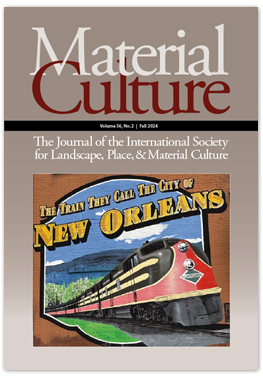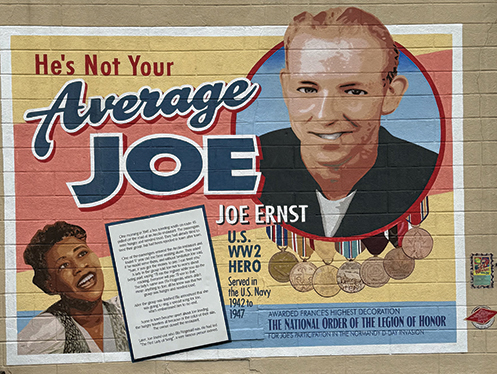Material Culture Culture is printed two times a year for members of PAS:APAL. It is abstracted and indexed in: JSTOR, ProQuest, History and Life, Historical Abstracts, GeoAbstracts, and the MLA International Bibliography. You may download a PDF of the table of contents of the current issue here. The Fall 2024 issue of Material Culture includes:
 From “Broomcorn Capital of the World” to Old Order Amish: Murals and the “Art” of Placemaking in Arcola, Illinois
From “Broomcorn Capital of the World” to Old Order Amish: Murals and the “Art” of Placemaking in Arcola, Illinois
By Michael Cornebise and David Viertel, Department of Geology / Geography, Eastern Illinois University
Abstract: In 2012, the city of Arcola, Illinois, commissioned a series of 15 “historic” murals as part of a broader community beautification project. Mural themes were chosen to showcase features of the city’s settlement history and changing geographic patterns. This paper examines how Arcola’s murals serve to represent the community by focusing on selected examples that portray the city’s locational heritage and ethnicity. We also consider how murals, as a form of public art, can play a role in tourism development strategies and inform notions of connectivity, community memory, and placemaking.

Not Your Average Joe Mural in Arcola, Illinois.
The “Idealized” Mexican American Housescape
By William F. Manger, Independent Scholar
Article originally appeared in Material Culture, Spring 2000, Vol. 32, pp. 1-36.
Introduction: For more than three centuries the American Southwest has been home to more than four-fifths of the Mexican American population. The significance of this concentration has prompted one geographer to label the region the “Mexican American homeland.” Despite their large numbers and long-time settlement, many scholars of the region have noted the lack of vestigial reminders that attest to their historical presence in the Southwest. In the residential landscape, in particular, it has been observed that few cultural signatures exist to distinguish Hispanic neighborhoods from those of their non-Hispanic neighbors . This scant material record is primarily attributed to a history of non-Hispanic domination and the wholesale destruction of barrios (neighborhoods) since the 1950s to make way for urban renewal and economic development.
